
On this day, August 30, 2020, President Trump and Portland Mayor Ted Wheeler (D) traded harsh criticism of each other over violent clashes between anti-racism protesters and conservative counter protesters, a day after the fatal shooting of a member of the right-wing group Patriot Prayer. Patriot Prayer's founder, Joey Gibson, has held pro-Trump rallies repeatedly in Portland and other cities since 2016. Oregon Gov. Kate Brown announced that state police will patrol the nightly protests in Portland with help from officers from neighboring communities.
 Post an Event
Post an Event
| Benton County Republicans’ Private Fundraising Event, “Bent-on Boots and Bling” with Trey Taylor |
| Friday, September 5, 2025 at 5:00 pm |
| Featuring Trey Taylor
Music Private Event
Friday, September 5, 2025 5:00-5:30 pm VIP Reception
5:30-8:00 pm Heavy Appetizers,
Auction, Concert
Red: $750 VIP Reception
Front Row Table Sponsor
White: $500 Table Sponsor
Blue: $50 per person
Limited Seating. Get Yours Now!!!
Support Local
Dress up: Bling, Cowboy, Patriotic Benton County Republican
FUNDRAISER
www.BentonGOP.org
Get your tickets today at:
https://www.bentongop.org/event-details/benton-county-republicans-fundraiser/form
About Trey:
Trey is the youngest African American Man in Country Music History. The Denver Post wrote
"It's impossible to miss his enthusiasm. With a fondness for cowboy boots, gaudy colors and dazzling jewelry, Trey Taylor could stand toe to toe with any of the Pop, Country or even Rap
contemporaries of his generation.“ |
| Trysting Tree Golf Club, 34028 NE Electric Rd., Corvallis |
“Measure 110 is sucking the life from our communities”
House Republicans today
introduced legislation to end the crises of drugs, homelessness, and crime that have been exacerbated by the failed Measure 110.
The bill takes bold action to end Measure 110 as we know it to restore accountability and provide pathways to treatment for addicts so that they can become healthy, productive members of society.
The bill classifies possession of deadly drugs like fentanyl, heroin, and meth as a Class A Misdemeanor, mandates treatment to avoid jail time, bans public use, and requires evaluation and treatment as part of probation for certain drug and property crimes. It requires prison sentences for drug dealers and manufacturers with multiple convictions and increases the penalties for drug dealers who sell drugs that result in the death of a person.
The chief sponsors of the bill are Rep. Rick Lewis (R-Silverton), Republican House Leader Jeff Helfrich (R-Hood River), Rep. Tracy Cramer (R-Gervais), Rep. Kevin Mannix (R-Salem), Rep. Ed Diehl (R-Stayton) and Rep. Christine Goodwin (R-Canyonville).

“The citizens of Oregon understand the failures of Measure 110. We see the results on the streets, in the unacceptable overdose death rate, and in the catastrophic consequences to our communities, to public safety, and to livability,” said Lewis. “Change is needed, and we can’t afford to take small steps that fail to adequately address the problem. We filed the bill today. A great deal of thought has gone into it, and we have the opportunity to do the right thing for Oregon, for public safety, and for the drug addicted. The bill creates accountability, but it also provides the tools and the resources needed to get us on the road to recovery. We cannot wait any longer.”
“While the majority party talks endlessly about drug prevention, their policies opened the floodgates to drug access. Failing to end Measure 110 is to embrace the status quo of death, drugs, and decline. The people of Oregon have seen enough. House Republicans are answering their call for substantial, meaningful reforms to get drugs off the streets, put drug dealers behind bars, and get addicts into treatment. The legislature must deliver this short session by passing our bill,” said Helfrich.

"Enabling people to live on the streets and poison themselves is not compassionate, but that is exactly what Measure 110 is doing," said Cramer. "As a mother, we see hard drugs infiltrating our schools and it's caused overdose deaths among our teenagers to skyrocket to nearly 700% and third in the nation in teen addiction. We cannot settle for the bare minimum. It breaks my heart that Measure 110 is putting so many of our children’s futures at risk.”
“Oregonians are demanding drug addiction treatment and recovery. Our bill delivers on the failed promise of Ballot Measure 110 by incentivizing people to seek treatment and supporting them on the road to recovery. There is dignity in each individual human being. This is the compassionate thing to do for those suffering from drug addiction and for all Oregon communities,” Diehl said.
A D V E R T I S E M E N T

A D V E R T I S E M E N T
“This bill reflects the unanimous position of our House Republicans that we need to return to significant accountability for the use of street drugs. This requires official authority to intervene in a serious way so we can assure society that we are pressing forward on a system covering both public safety and the provision of compassionate rehabilitation services to addicted persons,” said Mannix, who serves on the Joint Committee on Addiction and Community Safety.
“Measure 110 is sucking the life from our communities. They’re overrun with drugs, crime, and homelessness. People do not feel safe. Businesses are leaving. People are afraid to do business in our state. We must change direction, and this bill begins to put us on the right track,” said Goodwin, who serves on the Joint Committee on Addiction and Community Safety.
--Staff Reports| Post Date: 2024-01-11 15:32:55 | Last Update: 2024-01-11 16:04:17 |
“Measure 110 is a failure on many fronts”
Oregon House Republican members of the Joint Interim Committee on Addiction and Community Safety Response Rep. Kevin Mannix (R-Salem) and Rep. Christine Goodwin (R-Canyonville) and Republican House Leader Jeff Helfrich (R-Hood River) issued the following statement regarding the recent audit of Measure 110. Measure 110 was passed with the promise that resources would be dedicated to treatment while making substance abuse legal, but the audit revealed structural failures in the way Oregon responded to the increasing waves of those addicted that the Measure created.
“This audit provides us with a roadmap as to how we need to navigate reforms to measure 110. We need to treat this as a serious challenge to the established system and an opportunity to truly fulfill the will of the voters in dealing with addiction. This supports the need to hold people accountable for their use of street drugs. We need to be able to intervene both for reasons of compassion as to the addicted individual but also the safety of our communities,” said Mannix.

“Measure 110 is a failure on many fronts, but today’s hearing confirmed that it directs too few of its resources to prevention and recovery. As a former teacher I was especially shocked to hear from parents who say even those scarce resources never make it to youth users or schools. Children who use drugs are significantly more at risk of lifelong addiction and mental health issues, but the majority party has neglected to invest in preventing addiction or recovery programs. We need to substantively reform Measure 110 from top to bottom to tackle Oregon’s drug addiction crisis,” said Goodwin.
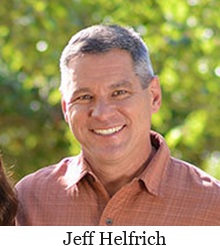
“This audit confirms that Measure 110 is failing the people of Oregon and will continue to do so without significant and fundamental reforms -- like the return of criminal justice accountability and mandatory treatment for those possessing dangerous drugs like fentanyl, heroin, and meth,” said Helfrich. “More of the same from the majority party will yield the same failed results. The people of Oregon have called for change, and the legislature must answer their call in the upcoming short session.”
House Republicans have offered solutions to the failures of Measure 110 that include repealing failed and ineffective aspects of the law and instituting actions widely supported by the people of Oregon, including banning the public use of hard drugs, instituting penalties for those who possess deadly drugs like fentanyl, making treatment mandatory for those arrested on drug-related crimes in order to avoid jail, and directing resources to the county level so local entities can better address areas of acute need.
--Staff Reports| Post Date: 2024-01-10 20:06:47 | Last Update: 2024-01-10 20:33:09 |
HCP places constraints on forest management and research activities
In a
letter addressed to the Oregon State Land Board, Oregon State University President Jayathi Y. Murthy shook up the state's plans by not recommending to the University's Board of Trustees that they participate in management of the Elliott State Research Forest.
President Murthy has chosen not to ask the Board of Trustees to authorize OSU participation in management of the forest at this time due to Tribal and other concerns about the current strategy, including the increasing constraints being placed on the forest’s management and research activities that is believed will compromise achieving the mutually agreed goals. Those constraints come in the form of the
Habitat Conservation Plan (HCP).
In 2022, the Oregon Legislature passed
SB 1546 which established the Elliott State Research Forest consisting of lands formerly constituting the Elliott State Forest and created a new state agency, the Elliott State Research Forest Authority (ESRFA), which would contract with OSU to manage and conduct research on the forest.
The legislature extended the deadline for completion to December 31, 2023. The additional time was to allow for adjustments to the HCP based on public comment and input from the ESRFA Prospective Board and the Services (U.S. Fish and Wildlife Service and the National Marine Fisheries Service). The extended timeline also allowed for any adjustments to be reflected in the forest management plan and financial plans.
The Oregon Department of Forestry (ODF) seems to be at odds with ESRFA with their mission to lock up over 250,000 acres of public state forest lands, preventing harvesting and active forest management on about 40% of Oregon's state forests. ODF wants HCP as the desired strategy to meet the requirements of the Federal Endangered Species Act (ESA).
The ODF believes that the HCP will increase the populations of certain species listed under the ESA, such as the Northern spotted owl, marbled murrelet, and the Oregon Coast and Lower Columbia River coho. ODF hopes that the HCP will achieve ESA compliance over the next 70 years. However, the spotted owl population in the Northwest has declined in every forest service study area including protected areas. The primary reason is that the critical habitat for this bird is also the desired habitat for its apex predator, the barred owl. No HCP restrictions on timber harvesting will correct this imbalance.
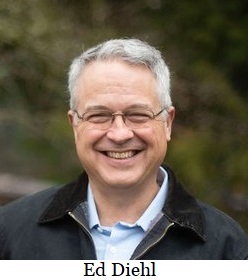
Representative Ed Diehl sees the reduced harvest as fiscally irresponsible and endangers rural counties that rely on the funding. He says, "the HCP is doubling down on failed forest policies of the last 30 years. Two guiding goals of our current forest policy are increasing spotted owl populations and reducing global carbon emissions. The theory is that we can achieve these goals by increasing forest habitat and curtailing timber harvesting, the two guiding policies that continue with the HCP. The evidence shows that these goals have not, and will not, be achieved with these policies. And what is indisputable is that these policies have devastated the communities that live, work, hunt, and recreate in these forests. I’ve seen it first-hand in my district; the loss of jobs, the loss of revenue to these once-thriving rural communities, and the raging wildfires. These policies have robbed people of their livelihoods and their dignity. These policies have cost the state billions in revenue and turned our forests from an asset into a liability."
The HCP report also highlights, as an added benefit, an increase in carbon storage. The theory is that Oregon can achieve environmental goals by increasing forest habitat and curtailing timber harvesting. However, there is mounting evidence that shows it won’t happen. Carbon storage and/or carbon sequestration is mentioned multiple times in the report, and described as an important environmental outcome. The underlying assumption in the model is that locking up Oregon state forest lands in Harvest Conservation Areas, and stretching out harvest cycles to 90 plus years in other areas, are important strategies for carbon storage. Forestry researchers at the U.S. Department of Agriculture Pacific Northwest Research Station have consistently found the opposite will occur. Locking up forests ends up emitting more CO2 than sustainable harvests. The science shows that a 45-50 year timber harvest cycle is optimal for carbon storage – you grow a tree through its highest carbon storing years, harvest and ‘sequester’ that carbon in lumber to build homes, and plant another tree to repeat the cycle.
A D V E R T I S E M E N T

A D V E R T I S E M E N T
Rep. Diehl says the HCP will continue these failures under false pretenses, reducing annual timber harvests by about 40% of current levels for the next several decades. The heart of the HCP is establishing Habitat Conservation Areas, and as the report highlights, after 30 years, no harvesting inside the Habitat Conservation Areas is assumed in some of the model scenarios.
"Implicit in the HCP model is that this carbon storage policy provides a net global benefit," Diehl states. "The opposite is true, however. Whether Oregon cuts another tree down or not, the United States will continue to utilize wood products to meet growing demand for homes, paper products, and packaging. In fact, the US is a net importer of softwood lumber. And as imports from Canada continue to decline, we are left importing lumber from overseas. What this means is simple: Every tree that Oregon takes out of a sustainable harvest cycle is one more tree that must be processed overseas and transported on a diesel guzzling, carbon spewing freight ship halfway around the world. Or, homes will be built with more steel and concrete, two building products that are extremely carbon intensive. In other words, every tree that Oregon takes out of a harvest cycle is, in fact, increasing the global carbon footprint."
The ESRF was created to serve as a living laboratory for vital research on landscape-scale approaches to sustainable forest management, climate resilience, biodiversity and ecosystem functions, and eco-cultural social benefits over the long-term. The research forest can also provide Oregonians with access to forest education and recreation, as well as jobs in forest products, forestry and forest research. If ODF is set against existing research, what use is ESRF doing more research?
Oregon Natural Resource Industries (ONRI), has joined ESRF against HCP and has taken the lead to stop HCP.
--Donna Bleiler| Post Date: 2024-01-10 12:19:43 | Last Update: 2024-01-10 16:56:11 |
Columbia River Basin is subject of 10-year partnership
On December 14, 2023, the Biden Administration announced a
historic agreement to work in partnership with Pacific Northwest Tribes and States to restore wild salmon populations, expand Tribally sponsored clean energy production, and provide stability for communities that depend on the Columbia River System.
Building on President Biden’s direction to Federal agencies, the agreement, when combined with other funding, will invest $300 million over 10 years to restore native fish and their habitats throughout the Columbia River Basin, with added measures to increase the autonomy of States and Tribes to use these funds. The Administration will also facilitate the build-out of at least one to three gigawatts of Tribally-sponsored renewable energy production, increased flexibility for the hydro-system, and studies of dam services. Of this $300 million, $100 million would be provided to the four Lower River Treaty Tribes, Washington, and Oregon to use for fish restoration projects, and $200 million would be provided for hatchery modernization, upgrades, and maintenance.
“In the agreement signed today, BPA sought to provide our ratepayers operational certainty and reliability while avoiding costly, unpredictable litigation in support of our mission to provide a reliable, affordable power supply to the Pacific Northwest,” said John Hairston, Administrator and CEO of the Bonneville Power Administration. The agreement keeps energy affordable by avoiding potentially significant rate increases from court ordered dam operations. The Bonneville Power Administration estimates that today’s agreement will have an annual average rate impact of 0.7 percent.
The biggest challenge came from environmental plaintiffs and Brenda Mallory, Chair of the White House Council on Environmental Quality. “This agreement charts a new path to restore the river, provide for a clean energy future and the jobs that come with it, and live up to our responsibilities to Tribal Nations.” Federal investments to wild fish restoration over the next decade will enable an unprecedented 10-year break from decades-long litigation against the Federal government’s operation of its dams in the Pacific Northwest.
The agreement was filed in the Federal District Court in Oregon and sets commitments made by the Federal Government and implemented through a Memorandum of Understanding between the United States; the States of Oregon and Washington; the Nez Perce, Umatilla, Warm Springs, and Yakama Tribes; and environmental non-profit organizations.
Implementation of the agreement will diversify and develop affordable, clean, and reliable energy options for the region. Investments under this agreement will help to ensure continued energy reliability and affordability, transportation, recreation, irrigation, and other key services, including in the event that Congress decides to authorize breaching of the four Lower Snake River dams. The four hydroelectric dams on the lower Snake River provide multiple benefits to Idaho and the region including $686 million in jobs, movement of wheat, irrigation and 95% emission-free power generated by BPA. Where is Idaho in this partnership?
A D V E R T I S E M E N T

A D V E R T I S E M E N T
Proposals include upgrading rail infrastructure and grain storage, and developing energy output to protect grid and ratepayers along with recreational activities. This agreement honors Tribal treaty rights, honoring and respecting Tribal sovereignty, protecting Tribal homelands, and incorporating Indigenous knowledge and robust Tribal consultation into planning and decision-making.
Oregon Governor Kotek stated, “The Pacific Northwest's iconic salmon and steelhead are essential to our ecological and economic wealth, and a sacred part of tribal ceremonial, spiritual, and subsistence practices since time immemorial. The Columbia River treaty reserved tribes exemplify steadfast leadership in salmon restoration and stewardship, forging a strong partnership with our states in a shared commitment to comanaging this precious natural resource for generations to come. This successful and unprecedented partnership between the six sovereigns and the United States government has established a shared vision and pathway forward for restoration in both the lower and upper Columbia River Basin. Oregon looks forward to continued collaboration on a successful restoration.”
Washington Governor Jay Inslee added, “This agreement between the U.S. government and the Six Sovereigns and NGO plaintiffs is that path forward. It is a durable, comprehensive product of determined leadership by all parties to help secure the long term economic, energy, and salmon recovery needs of our region.”
--Donna Bleiler| Post Date: 2024-01-05 23:22:17 | Last Update: 2024-01-06 00:02:18 |
This ruling limits absolute power and lawlessness
Two years ago, the Oregon Department of Environmental Quality (DEQ) adopted the Climate Protection Program, which creates limits on greenhouse gas emissions from oil and natural gas companies, with a target of 90% reduction by 2050. The program also allows for fossil fuel suppliers to reduce emissions through the program’s Community Climate Investment (CCI) credit program (cap-and-trade). NW Natural must purchase CCIs because the company, which only sells fossil fuel gas, must offset its carbon emissions enough to meet state-required climate goals.
This regulation is putting oil and natural gas companies at a disadvantage to even service their customers fairly, despite plans to convert to renewables using biogas from decomposing organic matter. They argued that DEQ exceeded its authority, and the
Oregon Court of Appeals agreed stating DEQ failed to comply, or even substantially comply, with disclosure requirement when adopting rules under the federal Clean Air Act.
The court opinion goes into the authority for the rule:
“In 2020, recognizing the danger posed to Oregonians by GHG, then Governor Brown issued Executive Order 20-04, in which she directed EQC and the Department of Environmental Quality (DEQ) to develop rules establishing a sector specific GHG “cap and reduce program.” Specifically, Governor Brown directed EQC and DEQ to “take actions necessary” to “cap and reduce” GHG emissions from large stationary sources, from transportation fuels, and from all other liquid and gaseous fuels. In accordance with that directive, EQC and DEQ engaged in an extensive and public process to develop the CPP rules. As adopted, the rules aim to, among other things, “reduce greenhouse gas emissions from sources in Oregon.” OAR 340 -271- 0010(3).”
DEQ contends the court decision only applies to an administrative error and does not deny them authority, and are working on the next step with the Department of Justice.
Perhaps the question should go back to 2019 and 2020 when the Oregon House and Senate Republicans used their veto power and walked out to stop the cap-and-trade bill. That didn't stop Governor Kate Brown. Frustrated, she dictated cap and trade as "cap and invest" by
Executive Order 20-04 that directed state agencies to draft carbon reduction rules that would achieve the same goals. Since state agency administrators are appointed by the governor to work at her pleasure, the cap and trade program has never returned to the legislature for confirmation, but legislation has built up EO 20-04, boot strapping it in as if it were passed with full public input and support.
A D V E R T I S E M E N T

A D V E R T I S E M E N T
This week's ruling that the Oregon DEQ’s Climate Protection Program failed to comply with disclosure requirements during rules adoption, seems to be systematic of the real issue. The program is one of the most radical regulations of energy in the nation. And worldwide, the reality is China and India are going to use more and more coal. China is building more than 50 new coal plants and the
Indian Ministry of Coal stated that "the share of coal in India's energy mix is significant to ensure affordable energy availability, accessibility, & energy security."
“Most Oregonians, regardless of party affiliation, believe in the rule of law. I think a state agency rushing to implement a draconian regulatory scheme without following the law is irresponsible and bad governing,” said Senate Republican Leader Tim Knopp (R-Bend). “This week’s ruling highlights the importance of our nation’s system of checks and balances, which limit absolute power of unelected bureaucrats and politicians who abuse their power. I hope the courts continue to hold lawlessness accountable.”
--Donna Bleiler| Post Date: 2024-01-04 16:51:33 | Last Update: 2024-01-04 02:03:04 |
Marc Thielman’s lawsuit rattles Secretary of State
The Rob Taylor Show was cancelled on Coos Bay radio for primarily exposing Representative David Brock Smith. That encouraged him to push his dream forward into his own platform. His first podcast, January 1, he interviewed Marc Thielman, only to find out he is being surveilled by the Secretary of State.
Thielman reported that his lawsuit,
Marc Thielman, et al. v. Tina Kotek et al., came to fruition with Representative Ed Diehl’s public records request exposing the Secretary of State in the pursuit of developing spying software to target those they determine are spreading misinformation in elections. The records request confirmed that the Secretary has already spent over $5 million on a test pilot in 2022 that was never turned off. The Secretary continues to receive list of individuals they want investigated for spreading mis- dis- and mal-information. Included on that list he named Rob Taylor and Lars Larson.
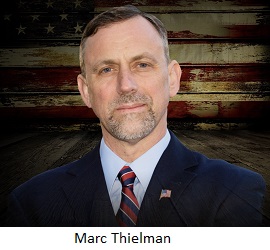
Thielman says they used a government slight-of-hand to do the test run to keep it from the public. It was only when they formalized the solicitation for vendors to develop the software that the public became aware of how they want to surveil phones, emails, social media, and any other reporting or sharing of information. This was the first indication that Oregon was setting up the Secretary as our own CISA “Ministry of Truth”.
The contract was awarded to a UK firm, claiming “they use Artificial Intelligence (A.I.) to find and track disinformation threats made by the public.” But Secretary LaVonne Griffin-Valade quickly denied it, and caught her in a lie. Thielman said they have filed an injunction to stop the contract.
A D V E R T I S E M E N T

A D V E R T I S E M E N T
Washington State implemented their misinformation program about six months ago and Thielman says people are getting knocks on their doors over things they have posted on social media and voiced on podcasts. Oregon is the only state that has filed a case to fight for free speech.
Thielman thinks that 2024 will be a make-or-break year, and we can look forward to more aggressive government attacks. We have almost no chance of having a unified election. Even if the election is fraud free, we will still have to contend with Antifa and rioting.
Thielman indicated he is putting all his effort into this lawsuit, because of the change in government he has seen and how important it is. He says it hits to the underbelly, and they know their system is unconstitutional, but they don’t care.
--Donna Bleiler| Post Date: 2024-01-04 11:15:33 | Last Update: 2024-01-05 13:25:25 |
Does bad information meet the test of misinformation?
The Oregon Secretary of State wants to curtail misinformation about elections. Steve Novick, Oregon Department of Justice environmental lawyer, may be challenging the definition of misinformation. He wants the legislature to take action to redistribute the kicker more equitable. However, his argument uses “equitable” to replace “equal” in the constitution.
Novick published an
article proposing Governor Kotek call a special session to address redistributing the kicker giving the same amount to everyone. He also thinks that by a simple majority vote, the Legislature could make the kicker equitable, since this wouldn’t be a “bill for raising revenue,” it should not trigger the 3/5 vote requirement for tax increases. However, the 2000 ballot measure 86 explanatory statement states, “Ballot Measure 86 would permit the Legislative Assembly, by a two-thirds majority vote of all members elected to each house, to increase the estimates at any time during the two-year state budget period. The effect of an increase in an estimate would be to reduce or eliminate the “kicker” refunds otherwise due taxpayers under Ballot Measure 86.” Technically, distributing an equal amount would result in an increase in the taxable amount for higher taxpayers.
Novick argues that the Constitutional provision on the kicker just says "the total amount of the excess shall be returned to personal income taxpayers," and does not indicate how it should be distributed. When legislators have raised similar ideas, the Legislative Counsel’s office has told them, he presumes, something like “no, you can’t do that, because when the voters put the kicker in the Oregon Constitution they thought they were requiring that kickers be distributed as a percentage of taxes paid.”
However, Article 1, Section 20 of the Oregon Constitution guides the treatment of all people: “Equality of privileges and immunities of citizens. No law shall be passed granting to any citizen or class of citizens privileges, or immunities, which, upon the same terms, shall not equally belong to all citizens.—” The Legislative Counsel is thus correct in saying “no” to the unfair distribution of the kicker.
Novick sees no value to fiduciary responsibility in the state economist’s forecasts saying, “If we only hired starry-eyed optimists as state economists, there’d never be a kicker.” Oregon ranks 27 in fiscal stability and 32 in government credit rating. Taking a riskier approach just to reduce the kicker would have effects on the economy.
A D V E R T I S E M E N T

A D V E R T I S E M E N T
Novick belittles voters assuming they didn’t grasp the significance of their vote on Measure 86 in 2000, further assuming they were voting only on the money that would be handed out. He refers to the
voters pamphlet, claiming it “certainly gave voters no reason to believe they were voting to give huge windfalls to rich people.” However, the arguments in favor state, “Legislators have consistently tried to spend your money…fought hard to return non-budgeted funds back to the people.” “It’s our moral obligation to return the excess. Help curb the growth of government by putting the kicker in the Oregon Constitution.”
Novick further tries to suggest the last statement in the measure, “Ballot Measure 86 would permit the Legislative Assembly to determine the means by which "kicker" refunds are returned to taxpayers”, could be used to mean more than how it is sent back to the taxpayer. However, the text of the measure, Section 14 (5) clearly defines this statement as being how the state processes and returns the kicker.
For what benefit does Novick suggest such a controversial move? It would be the most socialistic move this state has made, which could have an economic impact and stymie growth. Novick repeats that these are his own opinions, but are they mis- dis- or mal-information that may influence voters in an election and subject to the Secretary’s new software? When does bad information become misinformation?
--Dollie Banner| Post Date: 2024-01-04 09:39:09 | Last Update: 2024-01-04 14:34:25 |
The state, Central City Concern, city, county, spearhead effort to purchase building
Governor Tina Kotek, Multnomah County Chair Jessica Vega Pederson, Portland Mayor Ted Wheeler and Central City Concern have announced that through a joint effort, Central City Concern has finalized the contract to purchase a building in Portland’s central city to provide treatment and temporary housing for people experiencing substance use disorders. The contract was finalized in less than two weeks and will add over 70 treatment beds.
“This is an incredible opportunity to fill a direct gap in needed treatment options in the central city,” Governor Kotek said. “The urgency and collaboration that made this purchase possible is precisely the kind of leadership this moment demands. I want to thank my colleagues at the County and City, as well as Central City Concern and CareOregon for rising to the occasion. See a problem, see a viable solution, run toward it.”

This solution may fall far short or relieving the stress caused by
Measure 110. According to the
Family Addiction Specialst "relapse rates for individuals who enter recovery from a drug or alcohol addiction are quite high. Studies reflect that about 40-60% of individuals relapse within 30 days of leaving an inpatient drug and alcohol treatment center, and up to 85% relapse within the first year."
The announcement comes just weeks after Governor Kotek’s Portland Central City Task Force -- of which the Chair, Mayor and CCC CEO Andy Mendenhall served as members -- announced its official recommendations and report, including a charge to expand residential substance use disorder treatment services.
“Central City Concern applauds the leadership and partnership of Governor Kotek, Chair Vega Pederson and Mayor Wheeler for decisively acting on recommendations that came directly from the Portland Central City Task Force,” said Andy Mendenhall MD, CEO of Central City Concern. “This program will provide temporary housing and treatment for people experiencing substance use disorders who will benefit from a more structured level of service. Medicaid data informed us we needed more of these services, and aligned leadership empowered rapid success with this project. This is a real win for our region.”
A D V E R T I S E M E N T

A D V E R T I S E M E N T
Some observers have raised eyebrows at a party that
advocated decriminalization of drugs, and then when that became a problem, created solutions that diverted public money to their friends as what some describe as a less-than-effective solution. All of the leaders pushing the center are Democrats and the Democratic Party of Oregon
supported the passage of Measure 110
Two days after the building was put up for auction, CCC submitted a bid with financial commitments including $6 million from the Oregon Health Authority, $6.25 million from Multnomah County, $2 million from the City of Portland, and $3 million of their own funds. CareOregon agreed to provide temporary bridge-loan funding to support the transaction through closing. The location of the building is confidential per a non-disclosure agreement until the sale is final.

The seller accepted the proposal, and Central City Concern finalized a purchase and sale agreement within 10 days of the building first being put up for auction. The Multnomah County Board of Commissioners is scheduled to take an official vote allocating funds tomorrow. The Portland City Council is also planning a vote this month.
“Our mandate is to make sure resources are available when people urgently need them,” Chair Vega Pederson said. “This facility, which we are fast-tracking to provide high-acuity beds for treatment, dramatically increases our response to this crisis. It is what we need from our partners and providers to serve the immediate needs of people across our continuum of care. Bravo Central City Concern.”
“I’m grateful for Central City Concern’s leadership in launching this project and quickly coordinating funding support with regional partners for a facility that will help expand direly needed treatment resources here in the City of Portland,” Portland Mayor Ted Wheeler said.
A D V E R T I S E M E N T

A D V E R T I S E M E N T
Renovations and hiring will be fast tracked with a goal to open in the fall. The building is expected to add over 70 beds to support a Residential Treatment Program for substance use disorders and behavioral health. With 24-hour staffing, the new program is anticipated to provide 40 residential treatment beds serving individuals for a duration of 1-4 months followed by step-down services on-site with 30-35 transitional housing beds plus outpatient SUD services.
--Staff Reports| Post Date: 2024-01-03 14:28:49 | Last Update: 2024-01-03 17:57:22 |
OHA agrees with audit on Measure 110
Oregon’s Democrat lead legislature wants to avoid a Special Session on Measure 110 by creating a bipartisan Measure 110 review committee. Legislative leaders are putting themselves in charge of the large-scale decriminalization of some drug usage, its oversight and solutions to Oregon's drug and addiction crisis.
The Joint Committee’s aim for the 2024 session is to seek urgent public health and public safety solutions and provide oversight, says Senate President Rob Wagner (D-Lake Oswego). But the bipartisan committee is in name only according to Vikki Breese-Iverson (R-Prineville). "On the issue of Measure 110, the Legislature made a special committee controlled by them via a majority of members on the committee (it is not bipartisan when they have a 3-vote majority on a committee). This committee will have hearings to basically hear from special interest groups bent on keeping drugs legal in Oregon so nonprofits can reap millions in solving a problem in which only 20% of drug users even want."
Oregon voter approval of Ballot Measure 110 led to a first-in-the-nation law coupling decriminalization of drug possession with new services to expand drug treatment availability. Controversial from the start, Measure 110 attracted more scrutiny amid a delay in funding services and decriminalization took effect contributing to the fentanyl trafficking explosion. Critics are planning to seek reforms in 2024 by legislation or possible ballot measure.
ORS 430.392, required the Secretary of State to audit the use of funds from Drug Treatment and Recovery Services Fund by grantees in new Behavioral Health Resource Networks (BHRNs). The Audits Division released an audit report titled
Funding and Delivery of Measure 110 Substance Use Disorder Services Shows Progress, but Significant Risks Remain.
From the program’s inception through June 2023, the Oregon Health Authority (OHA) reports collecting $284 million in Measure 110 revenues, including $275 million in cannabis tax revenues. The agency expended $265 million of Measure 110 revenues in that period, leaving an estimated carryover balance of $19 million at the end of the 2021-23 biennium. The audit reports Oregon has handed out an estimated $261 million in grants for drug treatment and recovery services under Measure 110 — a fraction of the amount brought in. The agency expects to award another $150 million to BHRN providers through June 2025.
Perhaps the most important ongoing detail for OHA to monitor is administrative costs reported by BHRN providers, which varies from an average of 7% in administrative costs through the first year of the grant period, ranging to more than 20%. OHA administrative costs through June 2023 totaled $15.3 million, or 5.4% of Measure 110 revenues. They paid for OHA staff to manage the program, contractors used for the program, data reporting, and funding for the OAC. In the 2021-23 biennium OHA used $6.1 million of General Fund dollars outside Measure 110 revenues to cover the portion of administrative costs beyond a 4% statutory cap on administrative spending from drug treatment fund revenues. In the 2023 legislative session, the Legislature added more responsibilities for OHA and eliminated this cap.
The Oregon Health Authority issued a written response in agreement with the audit findings. (Located at the end of the audit report.) The audit made six recommendations to OHA and the Oversight and Accountability Council (OAC) to improve the program.
- Develop a strategic plan with specific M110 outcome metrics and timelines and
present it in the 2024 legislative session. Consider working with outside researchers
for outcome evaluation if needed.
- Work with providers to better track and report:
a. Specifics on staffing, service expansion, and capital projects;
b. Youth services and virtual services; and
c. The availability of culturally and linguistically specific services.
- Work with providers to improve the consistency and reliability of service expenditures
and client data.
- To improve the application and review process moving forward: Work with
communities and providers to identify the most critical service gaps by county and
barriers to increasing services.
- To improve the application and review process moving forward: Make the application
clear and direct and improve review process transparency and consistency.
- To improve the application and review process moving forward: Require providers to
clearly detail what they plan to do with M110 funds and their experience, capability, and plans for providing services to clients from linguistically diverse or culturally specific backgrounds.
A D V E R T I S E M E N T

A D V E R T I S E M E N T
Since 2021, Oregon continues to rank high nationally in rates of substance use disorders and low in access to treatment. Fentanyl use has exploded increasing the urgency to expand effective treatment services. The number of fentanyl pills seized in Oregon and Idaho’s high-intensity drug trafficking areas rose from 690 in 2018 to 3,020,802 in 2022. Can legislated OAC oversight really solve the out-of-control trafficking, addictions and excessive costs to taxpayers?
--Donna Bleiler| Post Date: 2023-12-27 11:33:18 | Last Update: 2023-12-27 02:06:36 |
U.S. Census trending towards a loss of one House seat
Oregon’s new Congressional District may be short lived. The apportionment based on 2023 population estimates forecast Oregon will lose one representative in the next reapportionment scheduled for 2030.
This assessment of the redistricting of congressional seats, which involves presidential electoral votes, comes straight from an extrapolation of current population trends as measured by the new 2023 population count by the U.S. Census Bureau. If these trends continue, and that’s a big ‘if’, the next map would shift 13 seats to more red states according to an analysis by the
Census Bureau.
Congress has a cap of 435 House seats so as population moves seats are adjusted. Several blue states are losing their population. California is projected to lose four seats, New York will lose three, and Illinois two seats. Oregon, Minnesota, Pennsylvania and Rhode Island are on schedule to lose one seat. On the reverse, Texas will pick up the most adding four, Florida three, and one each in Idaho, Arizona, Utah, Tennessee, Georgia and North Carolina.
The
U.S. Census Bureau released population estimates this week. "Population trends are returning to pre-pandemic norms as the number of annual deaths decreased last year and migration reverted to patterns not seen since before 2020.”
A D V E R T I S E M E N T

A D V E R T I S E M E N T
The
national gain is reported as 1.6 million people in 2023, a 0.5% gain, up from 0.4% in 2022 and 0.2% in 2021. More states experienced population growth in 2023 than in any year since the start of the pandemic.
The West Coast states of Alaska and New Mexico gained population after losing population in 2022. However, California, Oregon and Hawaii continued to lose population in 2023 but at a more modest pace than the prior year. Oregon’s population continued to drop by 6,021 in 2023, somewhat less than the 16,000 lost in 2022.
What is Oregon doing to reverse this trend? Governor Kotek has welcomed AI manufacturing that may replace workers lost, but may also set up a paradigm shift for competition with population growth.
--Donna Bleiler| Post Date: 2023-12-23 08:39:25 | Last Update: 2023-12-22 01:38:44 |
New Oregon Transparency Website provides details on state spending and performance
Enterprise Information Services has launched a new Oregon Transparency Website, which went live on Dec. 13, 2023. The transparency website features information and resources on public meetings , public records , state salaries , revenue , budgets and more.
In 2009, through the approval of
HB 2500, Oregon state government enacted the Oregon Transparency Program and website legislation. The program created an open resource where website visitors can access details on how the state is spending tax dollars and information on programs and services that provide investments back into Oregon’s economy. The only remaining chief sponsor of the bill is Senator Kim Thatcher.
The
Transparency Oregon Advisory Commission was created to advise on website content and information. The Commission consists of state senators, state representatives, Legislative Fiscal Office staff, as well as state agency and public members.
Enterprise Information Services’ Data Governance and Transparency Program focused efforts in 2023 to redesign the website to include updated content, more user-friendly navigation, and a new design to promote greater interactivity and transparency for the public. The process included insight from current users, agencies, committees and site analytics to improve the user's experience.
Chief Data Officer Kathryn Darnall Helms, the director of Data Governance and Transparency, says the new site is “a significant improvement in how we get valuable information and data out to our constituents, and is but one part of how we are pushing for greater transparency and more open data within Oregon state government.”
A release from the Department of Administrative Services provided several links.
--Staff Reports| Post Date: 2023-12-22 19:27:05 | Last Update: 2023-12-21 20:27:38 |
“Sweeping policy change should be the result of legislation, not executive decree”
The Oregon Court of Appeals has declared that Oregon's Climate Protection Program is invalid. Judge Jacqueline Kamins, in an
opinion issued by the Oregon Court of Appeals, said,
The Legislative Assembly has recognized that global warming “poses a serious threat to the economic wellbeing, public health, natural resources and environment of Oregon.” ORS 468A.200(3). Greenhouse gases (GHG) are gasses which “contribute[ ] to anthropogenic global warming.” ORS 468A.210(2).
In 2020, recognizing the danger posed to Oregonians by GHG, then Governor Brown issued Executive Order 20-04, in which she directed EQC and the Department of Environmental Quality (DEQ) to develop rules establishing a sector specific GHG “cap and reduce program.” Specifically, Governor Brown directed EQC and DEQ to “take actions necessary” to “cap and reduce” GHG emissions from large stationary sources, from transportation fuels, and from all other liquid and gaseous fuels.

At issue was a technical point about the DEQ not including "a written explanation of the commission’s scientific, economic, technological, administrative or other reasons for exceeding applicable federal requirements and any alternatives the commission considered and the reasons that the alternatives were not pursued.”
According to the Appeals Court, "...we agree that the Environmental Quality Commission (EQC), in adopting the CPP rules, did not comply with the heightened disclosure requirements applicable to it when it adopts rules that apply to entities required to obtain Title V permits
under the federal Clean Air Act (Title V sources). ORS 468A.327(1).
Because EQC, when adopting the CPP rules, did not comply -- or even substantially comply --with the heightened disclosure requirements applicable to it when adopting rules that apply to Title V sources, we conclude that the CPP rules are invalid.
The remaining question is the appropriate remedy; that is, which rules are we are required to hold invalid in this rule challenge pursuant to ORS 183.400(4)(c). In a footnote, EQC contends that if we agree with petitioners’ argument that it failed to provide the disclosure required under ORS 468A.327(1), the correct remedy would be to invalidate only those rules that regulate large stationary sources. In
response, petitioners who challenge EQC’s compliance with ORS 468A.327(1), contend that at least one Title V source is a “fuel supplier” under the rules creating the cap-and reduce system. In their view, because the rules creating the cap-and-reduce system apply to a Title V source and were adopted without compliance with ORS 468A.327, those rules, too, are invalid.
We agree with petitioners. As noted, the heightened disclosure requirements in ORS 468A.327(1) are applicable when EQC adopts any rule “that applies to any facility required to pay fees under ORS 468A.315,” i.e., any facility with a Title V operating permit. Because the rules creating the cap-and-reduce system do apply to at least one Title V 668 N.W. Natural Gas Co. v. Environ. Quality Comm. source and were adopted without compliance with ORS 468A.315(1), those rules are invalid.
In sum, for the reasons above, we conclude that the CPP rules are invalid.
Republican leadership in both chambers of the Oregon Legislature issued statements.
“Most Oregonians, regardless of party affiliation, believe in the rule of law. I think a state agency rushing to implement a draconian regulatory scheme without following the law is irresponsible and bad governing,” said Senate Republican Leader Tim Knopp (R-Bend). “This week’s ruling highlights the importance of our nation’s system of checks and balances, which limit absolute power of unelected bureaucrats and politicians who abuse their power. I hope the courts continue to hold lawlessness accountable.”
“Sweeping policy change should be the result of legislation, not executive decree. The court recognized that fact and ruled correctly. Oregon will have a brighter future when the governor and ruling party recognize that building consensus within the legislature will yield better – and legal – results than their top-down approach,” said House Republican Leader Jeff Helfrich (R-Hood River).
--Staff Reports| Post Date: 2023-12-22 12:48:48 | Last Update: 2023-12-22 14:10:43 |
Read More Articles






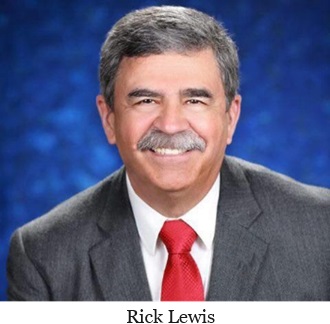
 “The citizens of Oregon understand the failures of Measure 110. We see the results on the streets, in the unacceptable overdose death rate, and in the catastrophic consequences to our communities, to public safety, and to livability,” said Lewis. “Change is needed, and we can’t afford to take small steps that fail to adequately address the problem. We filed the bill today. A great deal of thought has gone into it, and we have the opportunity to do the right thing for Oregon, for public safety, and for the drug addicted. The bill creates accountability, but it also provides the tools and the resources needed to get us on the road to recovery. We cannot wait any longer.”
“The citizens of Oregon understand the failures of Measure 110. We see the results on the streets, in the unacceptable overdose death rate, and in the catastrophic consequences to our communities, to public safety, and to livability,” said Lewis. “Change is needed, and we can’t afford to take small steps that fail to adequately address the problem. We filed the bill today. A great deal of thought has gone into it, and we have the opportunity to do the right thing for Oregon, for public safety, and for the drug addicted. The bill creates accountability, but it also provides the tools and the resources needed to get us on the road to recovery. We cannot wait any longer.”
 "Enabling people to live on the streets and poison themselves is not compassionate, but that is exactly what Measure 110 is doing," said Cramer. "As a mother, we see hard drugs infiltrating our schools and it's caused overdose deaths among our teenagers to skyrocket to nearly 700% and third in the nation in teen addiction. We cannot settle for the bare minimum. It breaks my heart that Measure 110 is putting so many of our children’s futures at risk.”
"Enabling people to live on the streets and poison themselves is not compassionate, but that is exactly what Measure 110 is doing," said Cramer. "As a mother, we see hard drugs infiltrating our schools and it's caused overdose deaths among our teenagers to skyrocket to nearly 700% and third in the nation in teen addiction. We cannot settle for the bare minimum. It breaks my heart that Measure 110 is putting so many of our children’s futures at risk.”

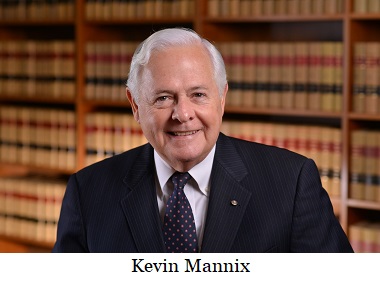
 “Measure 110 is a failure on many fronts, but today’s hearing confirmed that it directs too few of its resources to prevention and recovery. As a former teacher I was especially shocked to hear from parents who say even those scarce resources never make it to youth users or schools. Children who use drugs are significantly more at risk of lifelong addiction and mental health issues, but the majority party has neglected to invest in preventing addiction or recovery programs. We need to substantively reform Measure 110 from top to bottom to tackle Oregon’s drug addiction crisis,” said Goodwin.
“Measure 110 is a failure on many fronts, but today’s hearing confirmed that it directs too few of its resources to prevention and recovery. As a former teacher I was especially shocked to hear from parents who say even those scarce resources never make it to youth users or schools. Children who use drugs are significantly more at risk of lifelong addiction and mental health issues, but the majority party has neglected to invest in preventing addiction or recovery programs. We need to substantively reform Measure 110 from top to bottom to tackle Oregon’s drug addiction crisis,” said Goodwin.
 “This audit confirms that Measure 110 is failing the people of Oregon and will continue to do so without significant and fundamental reforms -- like the return of criminal justice accountability and mandatory treatment for those possessing dangerous drugs like fentanyl, heroin, and meth,” said Helfrich. “More of the same from the majority party will yield the same failed results. The people of Oregon have called for change, and the legislature must answer their call in the upcoming short session.”
“This audit confirms that Measure 110 is failing the people of Oregon and will continue to do so without significant and fundamental reforms -- like the return of criminal justice accountability and mandatory treatment for those possessing dangerous drugs like fentanyl, heroin, and meth,” said Helfrich. “More of the same from the majority party will yield the same failed results. The people of Oregon have called for change, and the legislature must answer their call in the upcoming short session.”
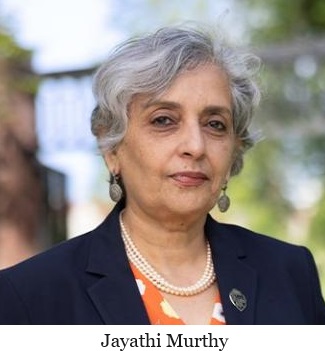
 Representative Ed Diehl sees the reduced harvest as fiscally irresponsible and endangers rural counties that rely on the funding. He says, "the HCP is doubling down on failed forest policies of the last 30 years. Two guiding goals of our current forest policy are increasing spotted owl populations and reducing global carbon emissions. The theory is that we can achieve these goals by increasing forest habitat and curtailing timber harvesting, the two guiding policies that continue with the HCP. The evidence shows that these goals have not, and will not, be achieved with these policies. And what is indisputable is that these policies have devastated the communities that live, work, hunt, and recreate in these forests. I’ve seen it first-hand in my district; the loss of jobs, the loss of revenue to these once-thriving rural communities, and the raging wildfires. These policies have robbed people of their livelihoods and their dignity. These policies have cost the state billions in revenue and turned our forests from an asset into a liability."
Representative Ed Diehl sees the reduced harvest as fiscally irresponsible and endangers rural counties that rely on the funding. He says, "the HCP is doubling down on failed forest policies of the last 30 years. Two guiding goals of our current forest policy are increasing spotted owl populations and reducing global carbon emissions. The theory is that we can achieve these goals by increasing forest habitat and curtailing timber harvesting, the two guiding policies that continue with the HCP. The evidence shows that these goals have not, and will not, be achieved with these policies. And what is indisputable is that these policies have devastated the communities that live, work, hunt, and recreate in these forests. I’ve seen it first-hand in my district; the loss of jobs, the loss of revenue to these once-thriving rural communities, and the raging wildfires. These policies have robbed people of their livelihoods and their dignity. These policies have cost the state billions in revenue and turned our forests from an asset into a liability."










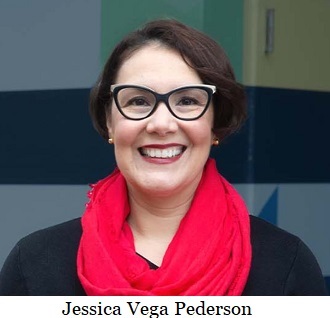
 This solution may fall far short or relieving the stress caused by Measure 110. According to the Family Addiction Specialst "relapse rates for individuals who enter recovery from a drug or alcohol addiction are quite high. Studies reflect that about 40-60% of individuals relapse within 30 days of leaving an inpatient drug and alcohol treatment center, and up to 85% relapse within the first year."
This solution may fall far short or relieving the stress caused by Measure 110. According to the Family Addiction Specialst "relapse rates for individuals who enter recovery from a drug or alcohol addiction are quite high. Studies reflect that about 40-60% of individuals relapse within 30 days of leaving an inpatient drug and alcohol treatment center, and up to 85% relapse within the first year."

 The seller accepted the proposal, and Central City Concern finalized a purchase and sale agreement within 10 days of the building first being put up for auction. The Multnomah County Board of Commissioners is scheduled to take an official vote allocating funds tomorrow. The Portland City Council is also planning a vote this month.
The seller accepted the proposal, and Central City Concern finalized a purchase and sale agreement within 10 days of the building first being put up for auction. The Multnomah County Board of Commissioners is scheduled to take an official vote allocating funds tomorrow. The Portland City Council is also planning a vote this month.







 At issue was a technical point about the DEQ not including "a written explanation of the commission’s scientific, economic, technological, administrative or other reasons for exceeding applicable federal requirements and any alternatives the commission considered and the reasons that the alternatives were not pursued.”
At issue was a technical point about the DEQ not including "a written explanation of the commission’s scientific, economic, technological, administrative or other reasons for exceeding applicable federal requirements and any alternatives the commission considered and the reasons that the alternatives were not pursued.”